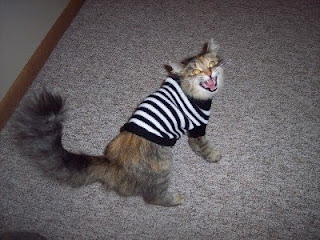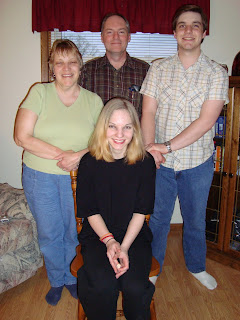For Cats, a Big Gulp With a Touch of the Tongue
By NICHOLAS WADE
Published: November 11, 2010
It has taken four highly qualified engineers and a bunch of integral equations to figure it out, but we now know how cats drink. The answer is: very elegantly, and not at all the way you might suppose.
Multimedia
Cats lap water so fast that the human eye cannot follow what is happening, which is why the trick had apparently escaped attention until now. With the use of high-speed photography, the neatness of the feline solution has been captured.
The act of drinking may seem like no big deal for anyone who can fully close his mouth to create suction, as people can. But the various species that cannot do so — and that includes most adult carnivores — must resort to some other mechanism.
Dog owners are familiar with the unseemly lapping noises that ensue when their thirsty pet meets a bowl of water. The dog is thrusting its tongue into the water, forming a crude cup with it and hauling the liquid back into the muzzle.
Cats, both big and little, are so much classier, according to new research by Pedro M. Reis and Roman Stocker of theMassachusetts Institute of Technology, joined bySunghwan Jung of the Virginia Polytechnic Institute andJeffrey M. Aristoff of Princeton.
Writing in the Thursday issue of Science, the four engineers report that the cat’s lapping method depends on its instinctive ability to calculate the point at which gravitational force would overcome inertia and cause the water to fall.
What happens is that the cat darts its tongue, curving the upper side downward so that the tip lightly touches the surface of the water.
The tongue is then pulled upward at high speed, drawing a column of water behind it.
Just at the moment that gravity finally overcomes the rush of the water and starts to pull the column down — snap! The cat’s jaws have closed over the jet of water and swallowed it.
The cat laps four times a second — too fast for the human eye to see anything but a blur — and its tongue moves at a speed of one meter per second.
Being engineers, the cat-lapping team next tested its findings with a machine that mimicked a cat’s tongue, using a glass disk at the end of a piston to serve as the tip. After calculating things like the Froude number and the aspect ratio, they were able to figure out how fast a cat should lap to get the greatest amount of water into its mouth. The cats, it turns out, were way ahead of them — they lap at just that speed.
To the scientific mind, the next obvious question is whether bigger cats should lap at different speeds.
The engineers worked out a formula: the lapping frequency should be the weight of the cat species, raised to the power of minus one-sixth and multiplied by 4.6. They then made friends with a curator at Zoo New England, the nonprofit group that operates the Franklin Park Zoo in Boston and the Stone Zoo in Stoneham, Mass., who let them videotape his big cats. Lions, leopards, jaguars and ocelots turned out to lap at the speeds predicted by the engineers.
The animal who inspired this exercise of the engineer’s art is a black cat named Cutta Cutta, who belongs to Dr. Stocker and his family. Cutta Cutta’s name comes from the word for “many stars” in Jawoyn, a language of the Australian aborigines.
Dr. Stocker’s day job at M.I.T. is applying physics to biological problems, like how plankton move in the ocean. “Three and a half years ago, I was watching Cutta Cutta lap over breakfast,” Dr. Stocker said. Naturally, he wondered what hydrodynamic problems the cat might be solving. He consulted Dr. Reis, an expert in fluid mechanics, and the study was under way.
At first, Dr. Stocker and his colleagues assumed that the raspy hairs on a cat’s tongue, so useful for grooming, must also be involved in drawing water into its mouth. But the tip of the tongue, which is smooth, turned out to be all that was needed.
The project required no financing. The robot that mimicked the cat’s tongue was built for an experiment on the International Space Station, and the engineers simply borrowed it from a neighboring lab.
















































